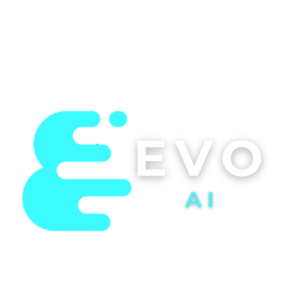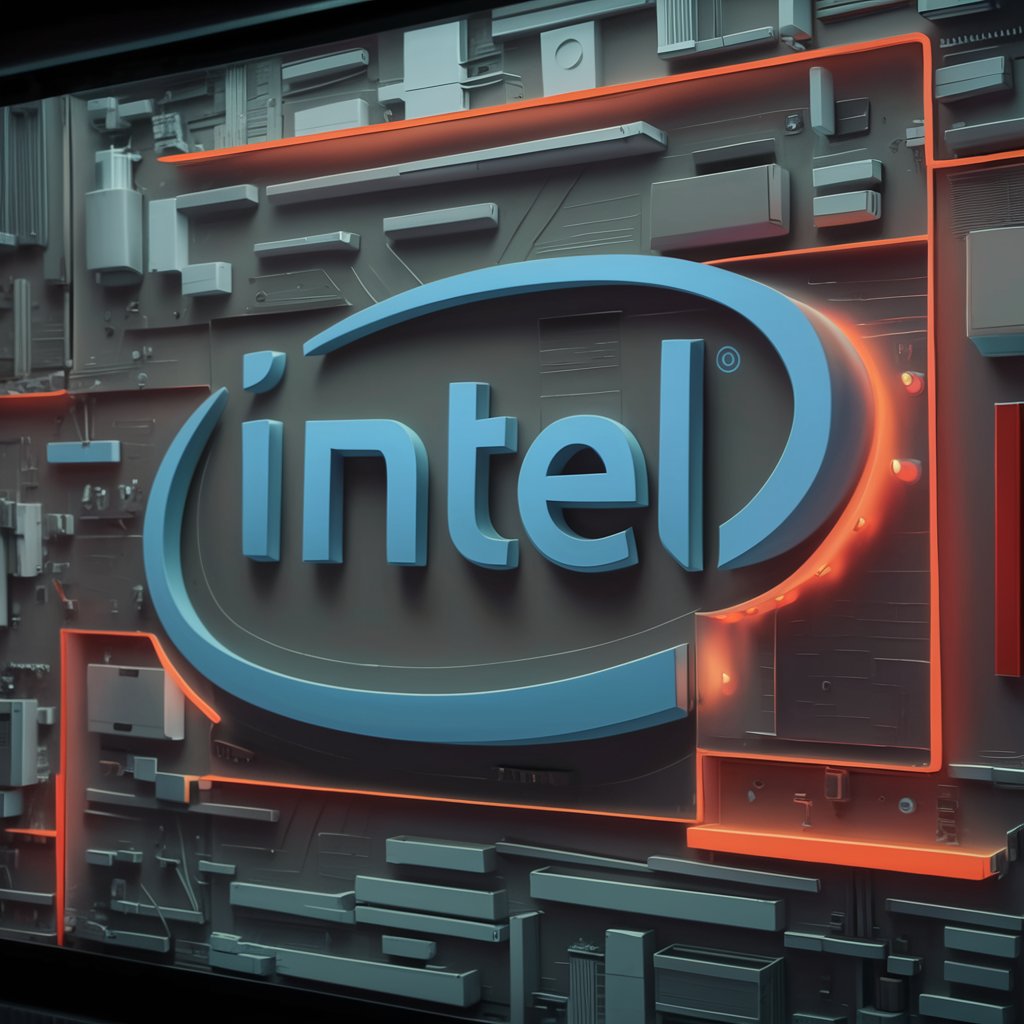
Stability AI’s New Releases a new small LLM Stable LM 2 12B, outperforming bigger models
Other AI News
-
Mistral AI Unveils Mixtral 8x22B: A Novel SMoE Model Distributed via Torrent
During the recent Cloud Next conference by Google, Mistral AI, a Paris-based startup known for its robust entry into the AI space, unveiled its latest innovation, the Mixtral 8x22B model. This new sparse mixture of experts (SMoE) model was released in an unconventional manner; rather than employing traditional methods such as demo videos or blog posts, Mistral AI opted to share a torrent link for downloading and testing. This release came hot on the heels of other significant AI developments, including the launch of GPT-4 Turbo with vision capabilities and Meta’s hint at an upcoming Llama 3 model.
The Mixtral 8x22B, housed in a hefty torrent file of 262GB, is notable for its use of the sparse MoE technique, which strategically combines different expert models to optimize performance and minimize costs. Each expert specializes in a distinct task, and a router network determines which experts to use for each token, enhancing the model’s efficiency by utilizing only a fraction of the available parameters at any given time. This approach has shown promise, as evidenced by previous versions like the Mixtral 8x7B, which efficiently used its parameters to match the performance of much larger models. As the AI community begins to explore the capabilities of Mixtral 8x22B, especially through platforms like Hugging Face for further training and deployment, its performance against benchmarks and predecessors remains eagerly anticipated.
-
xAI Launches Grok-1.5V: A Pioneering Multimodal Model from Elon Musk’s AI Venture
Elon Musk’s xAI has recently announced its first multimodal model, Grok-1.5 Vision (Grok-1.5V), expanding its capabilities beyond text to include the processing of images such as documents, diagrams, charts, screenshots, and photographs. Set to be available to early testers and existing users of the Grok platform, Grok-1.5V is designed to handle a diverse range of visual and textual information, positioning itself competitively among existing AI models that offer similar multimodal functionalities. The model has been showcased through various impressive demonstrations, including the ability to transform sketches into executable code, generate narratives from children’s drawings, and even perform practical tasks like identifying structural damage in wooden decks.
The development of Grok-1.5V marks a significant step for xAI, especially following the recent update of its Grok chatbot model. In testing, Grok-1.5V has been compared favorably against other leading models like GPT-4V and Claude 3 variants, particularly excelling in the newly introduced RealWorldQA benchmark—focused on real-world spatial understanding—which was developed by xAI itself. Alongside its technical advancements, xAI has encountered some challenges, including concerns about the Grok chatbot’s capability to inadvertently provide guidance on illegal activities. Despite these hurdles, xAI is committed to advancing its technology towards the creation of beneficial artificial general intelligence (AGI), with significant updates expected to enhance Grok’s multimodal understanding and generation in the near future.
-
Google’s Infini-attention: Revolutionizing LLMs with Infinite Text Processing
Google’s latest research has made a breakthrough in the capabilities of large language models (LLMs) with a new technique called “Infini-attention,” which allows these models to handle theoretically infinite lengths of text without an increase in memory and compute requirements. This development addresses the inherent limitations in the “context window” of LLMs—the maximum range of text tokens they can consider at one time—which directly impacts performance when dealing with extensive texts. Traditionally, exceeding the context window results in the oldest tokens being discarded, thus losing context continuity. The novel Infini-attention approach integrates a compressive memory module with the existing attention mechanisms of the Transformer architecture used in LLMs, enabling the model to retain a long-term memory of inputs without the exponential growth in resource consumption typically caused by the quadratic complexity of standard transformers.
The potential applications and improvements offered by this technique are vast, as demonstrated by Google’s experiments, where Infini-attention maintained high performance across extremely long texts—up to one million tokens—and outperformed other long-context models while using significantly less memory. For instance, in tests such as “passkey retrieval” and long text summarization, the Infini-attention model demonstrated superior capabilities in retrieving specific information from large datasets and generating concise summaries, respectively. This advancement not only paves the way for more robust and efficient models but also reduces the need for intricate engineering solutions like fine-tuning or retrieval-augmented generation, thereby simplifying the customization of LLMs for specific applications. As AI research continues to push the boundaries of what’s possible with language models, Infini-attention represents a significant step towards models that can seamlessly integrate vast amounts of data into their operations, enhancing their utility across various domains.
-
Buildbox 4 Unveiled: Transforming Game Development with AI-Powered No-Code Tools
Buildbox is set to revolutionize the game development landscape with the launch of Buildbox 4, which introduces an AI-powered no-code game creation engine. This innovative platform allows users—from amateurs to professional developers—to quickly turn their game ideas into reality without needing any coding skills. According to Jonathan Zweig, CEO of Buildbox, the tool empowers users to generate game assets, scenes, and even assist with level editing through simple prompts, significantly reducing the time and complexity involved in game creation.
Buildbox 4 enhances the capabilities of its predecessors by incorporating AI to assist with game logic, scene building, and asset generation, making it a comprehensive partner in game development. The platform not only accelerates the design process but also allows for high-level customization and experimentation, enabling both new and seasoned developers to prototype swiftly and explore innovative game concepts. Furthermore, Buildbox 4 supports the development of various game types, including sophisticated 3D games and first-person shooters, by interpreting detailed descriptions into complete gaming environments. With these features, Buildbox is positioning itself as a key player in the future of game development, where AI integration plays a central role in creative processes.
-
Arize Launches Innovative Tool for Monitoring AI Prompt Variables to Enhance Model Reliability
Arize has introduced a new tool aimed at enhancing the reliability of large language models (LLMs) by monitoring prompt variables that can lead to errors or distortions, such as hallucinations, in AI-generated responses. This product is particularly beneficial for AI engineers who need to manage and debug complex AI systems, ensuring the outputs are accurate and free from misleading information. The tool’s relevance is underscored by its ability to address the common issues faced when integrating prompt templates into LLMs, which are increasingly being used across various applications, from chatbots to customer support services.
The monitoring service provided by Arize helps prevent the spread of misinformation by identifying and isolating the root causes of errors in the AI’s responses—be it issues with the data input, the prompt template, or other aspects of the model configuration. Jason Lopatecki, Arize co-founder and CEO, highlighted the critical nature of this tool in maintaining the integrity of AI interactions, especially as companies often deploy multiple LLMs from various providers like OpenAI, Google, and Meta. With the AI field rapidly evolving, Lopatecki envisions a growing demand for such specialized tools, positioning Arize as the “Datadog for AI,” aiming to lead in cloud-based AI monitoring despite competition from established tech firms and emerging open-source ventures.
-
Sama Introduces Red Teaming Service to Bolster AI Safety and Ethics
Sama, renowned for its data annotation solutions, has launched Sama Red Team, a new service designed to enhance the safety, privacy, and security of generative AI and large language models (LLMs). This initiative represents a proactive approach to tackling the growing concerns around ethical AI by employing red teaming techniques traditionally used in cybersecurity. The method involves simulating adversarial attacks to expose and address vulnerabilities in AI models, thus preventing potential misuse and ensuring the models uphold high ethical standards.
The introduction of Sama Red Team comes at a time when the utilization of AI in various sectors is expanding, bringing with it increased risks of bias, privacy breaches, and the generation of harmful content. The service aims to rigorously test AI models against real-world scenarios to identify and mitigate risks in four key areas: compliance, public safety, privacy, and fairness. By employing a team that includes machine learning engineers, human-AI interaction designers, and annotators, Sama evaluates these models to uncover any potential for harmful outputs, bias, or privacy issues. The ultimate goal is to refine or redesign prompts to secure the AI systems against such vulnerabilities, enhancing trust in AI technologies by ensuring they are safe and reliable for users. Duncan Curtis, SVP of AI product and technology at Sama, emphasizes the importance of these measures, particularly as AI technologies such as ChatGPT become more integrated into our daily lives and regulatory frameworks.
-
Intel’s Gaudi 3 Launch: Elevating AI Acceleration with Enhanced Performance and Open Ecosystem
Intel has introduced its latest AI processing innovation, the Gaudi 3 AI accelerator, which marks a significant leap in the AI hardware sector, challenging Nvidia’s dominance. The Gaudi 3, built on the same foundational architecture as its predecessor, showcases a substantial performance enhancement with four times the computing power, double the network bandwidth, and a 1.5x increase in HBM memory bandwidth. These enhancements are designed to meet the escalating computational demands of large language models and complex AI workloads, providing substantial throughput improvements without sacrificing efficiency.
From a technical perspective, the Gaudi 3 embodies a heterogeneous computing architecture that features 64 Tensor processor cores (5th generation), 8 Matrix Math Engines for advanced calculations, and 128 GB of High Bandwidth Memory (HBM) with a bandwidth of 3.7 TB/s. This is complemented by 96 MB of SRAM offering 12.8 TB/s and a network interface composed of 24x 200 GbE RoCE Ethernet ports, along with PCIe 5 connectivity. Such specifications position Gaudi 3 as a powerhouse for both training and inference phases of AI model deployment, capable of handling intricate data operations and extensive neural network models more swiftly and efficiently than many current market offerings.
Intel’s strategy with Gaudi 3 goes beyond hardware performance, emphasizing an open ecosystem to encourage widespread adoption and integration. This approach is aimed at breaking the proprietary barriers often associated with AI accelerators, offering developers and enterprises a more adaptable and scalable solution. By allowing users to build clusters of any size via Ethernet connectivity, Intel facilitates the creation of expansive AI networks that are robust and versatile, driving forward the capacities of enterprise AI deployments.
-
Google Advances AI with Public Preview of Gemini Pro 1.5 on Vertex AI
Google has launched Gemini Pro 1.5 into public preview on its Vertex AI platform, as announced in a recent TechCrunch article. This latest iteration of Google’s AI model introduces enhancements aimed at streamlining the deployment of machine learning models and broadening the scope of AI applications. Gemini Pro 1.5 is designed to integrate seamlessly with Vertex AI, Google’s managed machine learning platform that simplifies the process of building, deploying, and scaling ML models. The update promises to improve both the efficiency and effectiveness of AI deployments, catering to developers looking to innovate rapidly and businesses aiming to leverage AI for a competitive edge.
The public preview of Gemini Pro 1.5 on Vertex AI allows a broader range of users to experiment with and fine-tune this advanced tool, ensuring that it meets diverse industrial needs while maintaining high standards of reliability and usability. This move is part of Google’s broader strategy to democratize AI technology, making powerful tools more accessible to companies of all sizes across various sectors. With Gemini Pro 1.5, users can expect enhanced capabilities in handling large datasets and complex computations, which are critical for applications such as natural language processing, image recognition, and predictive analytics. By improving the integration with Vertex AI, Google not only enhances the model’s functionality but also its applicability, thus fostering a more innovative and inclusive AI ecosystem.
-
Amazon Enhances AI Focus with Andrew Ng’s Board Appointment, Judy McGrath Steps Down
Amazon is bolstering its commitment to artificial intelligence by appointing AI luminary Andrew Ng to its board of directors, according to a recent TechCrunch report. This strategic move signals Amazon’s intensified focus on AI as it seeks to enhance its technological capabilities and competitive edge in the rapidly evolving sector. Andrew Ng, renowned for his influential roles in AI at Google and as a co-founder of Coursera, brings a wealth of expertise and experience that could steer Amazon’s AI initiatives towards more innovative and effective directions. His appointment comes at a time when Amazon is actively expanding its AI operations, evident from its recent developments and integrations of AI across its various business units.
In conjunction with Ng’s appointment, TechCrunch also reported that Judy McGrath, former MTV executive and board member since 2014, will be stepping down. McGrath’s departure and Ng’s arrival coincide with Amazon’s strategic pivot to deepen its engagement with AI, reflecting a broader trend where major tech companies are increasingly seeking to harness the power of AI to drive growth and innovation. By adding Andrew Ng to its board, Amazon not only gains a valuable ally in crafting its AI strategy but also sends a clear message about its dedication to remaining at the forefront of technological advancements. Ng’s expertise will likely influence Amazon’s approach to AI, potentially leading to new developments in machine learning, automation, and other AI-driven technologies that could reshape how Amazon operates internally and interacts with its customers.
-
Meta Strengthens AI Capabilities with Launch of New Custom Chip
Meta has unveiled its latest custom AI chip, marking a significant advancement in its hardware development aimed at optimizing machine learning tasks. According to a TechCrunch report, this new chip is designed to significantly enhance the performance and efficiency of AI operations within Meta’s vast array of services, from content recommendation algorithms to augmented reality features. The introduction of this custom AI chip is part of Meta’s broader strategy to become more self-reliant in terms of hardware, reducing dependence on external chip manufacturers and potentially lowering costs while improving system integration across its platforms.
The development of Meta’s custom AI chip underscores the company’s commitment to leading the tech industry in AI and computing power. By tailoring the chip’s architecture specifically to its operational needs, Meta aims to achieve faster processing times, greater power efficiency, and enhanced AI capabilities, which are critical for handling the extensive data processing required by its social media platforms and virtual reality systems. This move not only boosts Meta’s technological infrastructure but also strategically positions it to compete more vigorously with other tech giants who are also escalating their investments in specialized AI hardware. With this new development, Meta is set to enhance user experiences across its platforms, driving forward innovations in digital interactions and content delivery.
-
Cyera Secures $300M Funding to Enhance AI Data Security, Valuation Hits $1.4B
AI data security startup Cyera has confirmed an impressive $300 million funding round, bringing its valuation to a robust $1.4 billion, as reported by TechCrunch. This significant capital injection underscores the growing importance of cybersecurity in the AI space, particularly as businesses increasingly rely on vast datasets to power their AI systems. Cyera specializes in securing these datasets, ensuring that sensitive information is protected against breaches and unauthorized access, which is crucial for maintaining consumer trust and compliance with data protection regulations.
This latest funding round not only highlights Cyera’s rapid growth and the effectiveness of its security solutions but also reflects a broader industry trend towards heightened investment in cybersecurity measures tailored for AI environments. With its fresh influx of capital, Cyera plans to expand its operations, enhance its technology, and further solidify its position as a leader in AI data security. As companies continue to integrate AI into their core operations, the demand for specialized services like those offered by Cyera is expected to surge, pointing to a promising future for the startup in a critically important and rapidly evolving sector.
-
Meta to Launch Open-Source Llama 3 LLM, Expanding AI Accessibility
Meta has officially confirmed the upcoming release of its Llama 3 open-source large language model (LLM), set to debut within the next month, according to a recent TechCrunch report. This announcement marks a significant step for Meta as it continues to expand its footprint in the burgeoning field of AI technology. Llama 3 is anticipated to enhance the capabilities of its predecessors by offering more refined algorithms and broader applicability across various sectors, from digital marketing to customer service, bolstering Meta’s competitive edge in AI.
The decision to make Llama 3 open-source is particularly noteworthy, as it underscores Meta’s commitment to fostering innovation and collaboration within the AI community. By allowing developers and researchers worldwide access to this advanced model, Meta aims to accelerate the pace of AI development and encourage the creation of a wide array of applications, leveraging the model’s capabilities. This strategy not only helps advance the field of AI but also potentially sets new industry standards for accessibility and collaborative development in large language models. The release of Llama 3 is poised to significantly impact how businesses and developers engage with AI, providing them with powerful tools to create more intelligent and responsive AI-driven solutions.
-
Simbian Innovates by Integrating AI with Existing Security Tools
Simbian, a trailblazing technology firm, has introduced an innovative solution that integrates artificial intelligence into existing security tools, according to a recent TechCrunch report. This strategic development is designed to enhance the effectiveness of current security systems by enabling them to predict and respond to threats with greater accuracy and speed. Simbian’s AI-powered layer works seamlessly with a variety of established security platforms, providing them with the ability to analyze vast amounts of data more efficiently and detect anomalies that might indicate potential security breaches.
The integration of AI into existing security frameworks signifies a significant advancement in the cybersecurity field. By retrofitting AI capabilities into widely used security tools, Simbian is not only improving the utility of these tools but also extending their lifecycle and relevance in an increasingly complex digital landscape. This approach allows companies to strengthen their defenses without the need to invest in entirely new solutions, making cutting-edge security accessible to a broader range of businesses. Simbian’s initiative is poised to set a new standard in the industry, potentially leading to widespread adoption of AI enhancements in cybersecurity tools across sectors. This move could fundamentally transform how businesses protect their digital assets, offering more robust protection against the evolving threats of the digital age.
-
Poe Revolutionizes Monetization for AI Bot Creators with New Price-Per-Message Model
Poe, a platform specializing in artificial intelligence, has introduced a novel price-per-message revenue model for AI bot creators, as reported by TechCrunch. This innovative pricing strategy allows developers to monetize their AI bots based on the number of interactions or messages users engage with, offering a potentially lucrative revenue stream that aligns directly with usage rates. Poe’s new model aims to empower bot creators by providing them with a direct financial incentive to enhance the interactivity and functionality of their bots, encouraging the development of more sophisticated and engaging AI-driven applications.
This move by Poe could significantly impact the AI ecosystem, encouraging a surge in creativity and innovation among AI developers. By shifting to a usage-based revenue model, Poe not only supports the growth of its platform but also aligns the interests of bot creators with those of end-users, ensuring that bots are designed to maximize user engagement and satisfaction. This could lead to the development of AI bots that are not only more advanced but also more tailored to the specific needs and preferences of users. The price-per-message model might set a precedent in the industry, potentially influencing how AI services are monetized and scaled in the future.
-
Symbolica Champions Symbolic AI to Foster Ethical Development and Curtail the AI Arms Race
Symbolica is taking a unique approach to the burgeoning AI industry by focusing on symbolic models, aiming to mitigate the intensifying AI arms race, as detailed in a recent TechCrunch report. Symbolic AI, which involves using symbolic representations for problem-solving and reasoning, offers a clear alternative to the data-heavy methods typically employed in machine learning and deep learning. Symbolica’s strategy is to integrate symbolic reasoning into AI development, which they believe could lead to more transparent, explainable, and less resource-intensive AI systems. This approach not only promises to enhance the efficiency and comprehensibility of AI solutions but also positions Symbolica as a pioneer in advocating for a shift from the prevalent data-driven paradigms to a more reasoned and systematic form of artificial intelligence.
Symbolica’s commitment to symbolic models is poised to influence the broader AI market by potentially slowing down the competitive and rapid advancement often seen in the AI sector, dubbed the “AI arms race.” By promoting models that require less data and that are inherently interpretable, Symbolica aims to reduce the risks associated with AI, such as opacity and unintended bias, while fostering a more ethical AI landscape. This approach could appeal particularly to industries and sectors where understanding AI decisions is crucial, such as in healthcare, finance, and regulatory environments. If successful, Symbolica’s focus on symbolic AI could catalyze a significant shift in how AI is developed and implemented, encouraging a move towards more sustainable and ethical AI practices.
About The Author

Bogdan Iancu
Bogdan Iancu is a seasoned entrepreneur and strategic leader with over 25 years of experience in diverse industrial and commercial fields. His passion for AI, Machine Learning, and Generative AI is underpinned by a deep understanding of advanced calculus, enabling him to leverage these technologies to drive innovation and growth. As a Non-Executive Director, Bogdan brings a wealth of experience and a unique perspective to the boardroom, contributing to robust strategic decisions. With a proven track record of assisting clients worldwide, Bogdan is committed to harnessing the power of AI to transform businesses and create sustainable growth in the digital age.











Leave A Comment